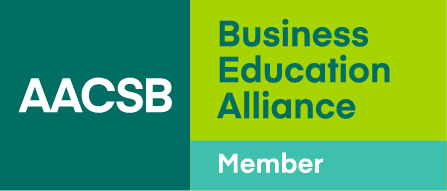The Transformation of Marketing in the Digital Age
- Marketers can promote brand loyalty by working with consumers to personalize goods and services.
- Because social media, e-commerce, and digital advertising have changed how businesses connect to customers, marketers must be fluent in emerging technology.
- Marketing professionals also must understand how and why consumer purchases are driven by ethical considerations, regional differences, and effective storytelling.
Rapid technological progress and altering consumer behaviors are changing the marketing environment. Today, marketing is more than just a set of promotional activities; it is a multifaceted strategy that incorporates data-driven personalization, technical innovation, and ethical considerations.
If business graduates want to work in the marketing field, it will be essential for them to possess technological expertise and an understanding of consumer preferences. This means that business schools must adapt their curricula to prepare future executives to navigate this dynamic discipline.
A New Type of Consumer
One of the biggest changes in marketing today is the emergence of the prosumer. No longer do customers passively consume what a company produces; now they actively contribute to the development, personalization, and promotion of goods and services.
One example is Nike’s “Nike By You” project, which lets customers create their own footwear. Another is LEGO Ideas, a platform that invites consumers to propose and vote on new LEGO set designs. These suggestions are then integrated directly into LEGO’s product development process. By involving customers in such meaningful ways, these companies not only foster loyalty, but also drive innovation.
The trend of customer participation is reshaping entire industries. Companies must rethink how they interact with potential buyers so they can build stronger client connections, increase customer engagement, promote brand loyalty, and jointly generate value. The payoff is worth it: According to a study by McKinsey, firms that engage in co-creation claim a 20 percent increase in consumer satisfaction and loyalty.
To be able to develop campaigns and market products in the participatory economy, business students must learn concepts of design thinking, consumer psychology, and innovation management. With these skills, graduates will understand how to turn customers into prosumers who are loyal to companies and brands.
A Digital Evolution
The marketing field also has been revolutionized by advancements in digital technology. Three advancements have been particularly impactful:
- Social media networks. Platforms such as Instagram allow companies to tell their brand stories and interact directly with customers.
- E-commerce sites. On these websites, which provide seamless consumer experiences, companies can offer everything from tailored product suggestions to one-click checkouts.
- Targeted online marketing powered by artificial intelligence (AI). Chatbots and predictive analytics enable companies to anticipate customer requirements in real time.
When graduates understand concepts of design thinking, consumer psychology, and innovation management, they can turn customers into loyal prosumers.
To take advantage of these advancements, marketers need to possess a blend of creative and analytical skills. Therefore, business schools must equip students with these skills, so their graduates will be able to harness the tools available effectively.
Pillars of Marketing Education
To position students for success in the evolving marketing domain, business schools should prioritize three core areas:
Experiential and applied learning. Schools can bridge the gap between theory and practice by offering students opportunities to collaborate with actual businesses. For instance, students might devise digital marketing campaigns for small companies or analyze consumer behavior patterns in emerging markets. Additionally, students can gain practical experience by participating in business simulations.
Through simulations and live projects, students deepen their understanding of real-world issues, practice creative problem-solving techniques, and gain invaluable practical insights into how business is done.
Technological fluency. Because the marketer’s toolkit now includes AI, big data, and automation tools, technological expertise is no longer optional—it’s essential. A report from Gartner estimates that 63 percent of marketers are still struggling with personalization, and only approximately 17 percent rely on AI across functions. Yet marketers could enhance their customer reach if they relied on chatbots, predictive analytics programs, and content creation tools. As an example, the company Salesforce has created Marketing Cloud to empower marketers to deliver personalized customer experiences at scale.
To help students build the technological skills that have become essential to the profession, schools can provide certifications and practical training in tools such as Google Analytics, Tableau, and HubSpot. Furthermore, by integrating AI-driven marketing strategies into their curricula, business schools can make certain that students are future-ready.
Ethical and sustainable marketing practices. When consumers are making buying decisions today, more of them are considering a company’s record on ethics and sustainability. A 2023 PwC report about Indian consumers shows that 88 percent of customers are willing to pay more for goods that are produced or sourced locally. That number goes to 87 percent if the product is made from recycled, sustainable, or eco-friendly materials or if it’s produced by a company with a reputation for ethical practices. These figures highlight how important it is for modern marketers to balance profitability with social and environmental responsibility.
Because the marketer’s toolkit now includes AI, big data, and automation tools, technological expertise is no longer optional—it’s essential.
Companies even can use their sustainability efforts to demonstrate their connection to clients. For instance, in 2013, Unilever unveiled its “Sustainable Living Plan,” which outlined its goal “to make sustainable living commonplace.” The company continues to report on its progress toward achieving its ethical and environmental goals.
As more companies adopt such ambitious goals, it will become more important for schools to expose students to such examples and prepare them to contribute to a more sustainable business future. Likewise, when schools integrate into their curricula topics such as ethical AI usage, green marketing, and corporate social responsibility, they equip their graduates to design strategies that prioritize long-term impact.
Two Additional Trends
Students need to be aware of two other forces that are shaping the marketing field:
The importance of local variations. Many parts of the world have unique characteristics that present both challenges and opportunities to marketers. India, for example, has witnessed a surge in vernacular digital content—that is, content that is provided in regional languages and dialects. This trend has been driven by affordable smartphones and localized social media platforms such as ShareChat, which allow digital marketers to reach even small, specialized audiences. It’s essential for marketers to understand and adapt to this linguistic and cultural diversity.
To prepare graduates to apply global best practices effectively even in regional markets, educators can encourage students to take on localized projects. Professors also can discuss region-specific case studies that deal with distinct, nuanced issues.
The role of storytelling. Storytelling is a powerful tool that marketers can use to build emotional connections with audiences. Stories should be compelling narratives that resonate with consumers’ values and aspirations. According to a report from Forbes, storytelling in marketing can increase consumer engagement by up to 22 percent compared to traditional advertising approaches.
When students master the art of storytelling, they can present data-driven insights that are seamlessly blended into more personal narratives.
Apple is one company that uses storytelling effectively. Its advertising campaigns frequently focus on human stories with emotional resonance and often highlight how its products enhance creativity.
Educators can help students develop this essential skill by incorporating storytelling workshops and creative exercises into the curriculum. When students master the art of storytelling, they can present data-driven insights that are seamlessly blended into more personal narratives.
The Future of Marketing Education
As marketing evolves, so too must marketing education. To equip students to lead in this field, business schools have the responsibility not only to teach the fundamentals, but also to anticipate the trends of the future. How can schools meet that second goal? Here are three potential strategies:
Collaborate with industry. Develop partnerships with businesses to provide students with opportunities to participate in internships and hands-on projects.
Research cutting-edge topics. Encourage faculty and students to engage in research that explores emerging trends such as neuromarketing or blockchain applications in advertising.
Provide global exposure. Offer exchange programs or virtual collaborations with schools in other countries to enable students to gain international perspectives.
Marketing no longer can be a siloed function at any company; it must be a central driver of business success and societal impact. By fostering innovation, embracing ethical practices, and integrating cutting-edge technology, business schools can prepare students to excel in this dynamic field.
The goal is not just to educate future marketers, but to empower them as thought leaders who can redefine the boundaries and impact of marketing in the years to come.




